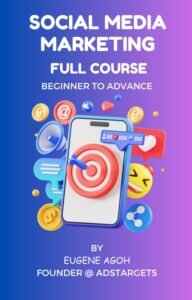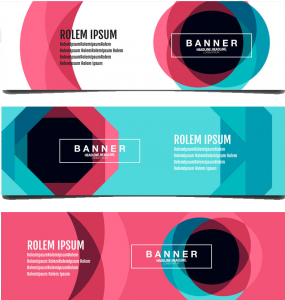Updated 21/04/2025
Today’s shoppers aren’t here for boring, static posts—they’re craving something fun, dynamic, and straight-up engaging. In fact, 90% of people say they want more visual and interactive stuff in their online experiences. Makes sense, right? Static content just doesn’t hit the same anymore.
Interactive content doesn’t just grab attention—it keeps it. It pulls users in, gets them thinking, comparing, and even competing. It’s like the secret sauce for getting people to not just scroll by but actually vibe with your brand. No wonder a whopping 93% of marketers swear by it for educating potential customers.
Whether it’s a fun quiz, a clickable infographic, or a calculator that spits out tailored advice, interactive content development is the plug you didn’t know you needed. This blog dives into top cool types of interactive content, sprinkled with real-life examples to show how you can step up your digital marketing game. Ready to level up? Let’s roll.
Table of Contents
ToggleWhat is Interactive Content?

So, what exactly is interactive content? It’s basically content that gets you involved in the experience instead of just passively soaking up info. Think of it like this: instead of just reading an article or watching a video, interactive content makes you take action—clicking, swiping, filling out forms, or whatever else gets you actively engaged.
With interactive content, you’re not just sitting back and watching the show; you’re part of the action. And that’s what makes it way more exciting than the usual static stuff. It’s all about user-driven interactions, making you feel more connected to the brand or message. And when it comes to interactive content development, it’s all about crafting experiences that keep people engaged and coming back for more. Cool, right?
What are the Benefits of Interactive Content?

So, why should interactive content even be on your radar? Here’s the deal: traditional content like blogs or videos? They’re cool, but they don’t pull you in the way interactive content does. With interactive content, your audience doesn’t just sit back and passively consume information—they get involved.
And trust me, people love it. When users actively engage with content, it creates a richer experience and builds a stronger connection with your brand. This leads to increased engagement, more memorable interactions, and—yep, you guessed it—more traffic, more leads, and those all-important passive links.
But it’s not just about getting people to click around. Interactive content provides some serious insights that can really level up your marketing game. When you track how users interact with elements like quizzes, polls, or calculators, you get a much clearer picture of what your audience cares about, what gets them excited, and where their pain points are.
This helps brands fine-tune their strategies, ensuring that future campaigns hit closer to home. So, it’s not just about fun content; it’s about smarter content that works. And we all know how vital that is in today’s marketing world.
And let’s face it—people want more than just the standard content they’re used to. High-quality, interactive content isn’t just a nice-to-have anymore; it’s a must. Consumers expect more dynamic and engaging experiences, and brands that prioritize this are going to stand out.
When you incorporate interactive elements, it’s like you’re giving your audience something they didn’t know they needed, and that automatically strengthens your relationship with them. The trust and connection you build with these interactive experiences go far beyond a simple blog post. It’s a whole new level of engagement that can make a lasting impact.
Still not convinced? Here’s the TL;DR version of why interactive content is a game changer:
#1. Higher conversions: When users engage with your content, it’s way easier to guide them towards taking the action you want. It’s like they’re already halfway there, thanks to that “Yes Set” technique, where every little interaction moves them closer to making a decision.
#2. Link-building powerhouse: Interactive content doesn’t just bring in immediate conversions—it’s also a magnet for backlinks. Even if a user doesn’t convert right away, they’re still likely to share or link back to your interactive content, which can massively boost your link-building strategy. If you’re trying to scale your SEO, this is huge.
#3. A competitive edge: Look, creating blog posts is relatively easy. You can hire a freelancer on Upwork to do that. But building something like an interactive quiz, a calculator, or a tool that provides personalized results? That’s much harder to pull off. And that’s where interactive content development really comes into play. You’re setting yourself apart from the competition in a way that’s not so easy to replicate.
#4. Building brand loyalty: Interactive content isn’t just about attracting clicks—it’s about building connections. When users engage with your interactive elements, they start to feel more connected to your brand—your personality, your values, your tone, and even your visual identity. This deepens their relationship with you and builds loyalty that goes beyond just browsing your website.
#5. Data-driven insights: One of the best things about interactive content is the wealth of data it gives you. Whether it’s surveys, quizzes, or polls, every interaction provides valuable insights about your audience—what they like, what they want, and what they need. You can use this information to better tailor your future content, refine your marketing campaigns, and even make important business decisions.
Plus, this data isn’t just valuable to your audience—it can be a goldmine for you too, helping you make smarter decisions in everything from content creation to marketing strategies.
So, there you have it. Interactive content development isn’t just a trend—it’s a strategy that delivers real, measurable results. It’s the future of digital marketing, and if you’re not jumping on board, you might want to rethink your approach.
What is the Cost of Interactive Content?

So let’s talk about the costs of interactive content. Is it cheap? Nah, not really. It can definitely be a bit more of an investment in terms of both time and money when compared to your usual static content.
But here’s the kicker: when done right, interactive content often delivers a much higher return on investment (ROI). Think about it—better engagement, higher conversions, and boosted brand awareness. It might cost more upfront, but the payoff in the long run is usually worth it.
The cool thing about interactive content development is that it can set your brand apart from the competition. Whether it’s the eye-catching visuals, the deeper engagement that keeps users hooked, or the extra value it provides, interactive content has the power to really make your brand stand out. That kind of impact is hard to get with basic static content, and it can make a huge difference in how your audience perceives you.
Of course, we get it—not every brand has a massive budget to throw at interactive content development. If you’re working with a smaller budget, don’t stress! You can still create engaging, interactive-like content that hits the mark. Try incorporating strong visuals, telling compelling stories, or adding a personal touch to your content. It’s all about finding the right mix that resonates with your audience without breaking the bank.
At the end of the day, it’s all about making smart decisions based on your goals and resources. If you can swing it, interactive content is a no-brainer for taking your marketing strategy to the next level. But even if you’re working with limited resources, there are still ways to create content that feels fresh and gets your audience involved. The key is knowing what your audience wants and tailoring your approach accordingly.
Who Needs Interactive Content?
So, who actually needs interactive content? Well, before jumping in, it’s important to really think about what your brand needs, who you’re trying to reach, and how much you can invest. Interactive content can be a total game-changer, but only if it aligns with your goals and resources. If you’re just throwing in some flashy, interactive elements for the sake of it, you’re likely just wasting your time and money. You want to make sure it’s actually adding value for your audience, not just looking pretty on the page.
If you’re thinking about diving into interactive content development, take a step back and make sure it’s the right fit. Like we said, interactive content isn’t one-size-fits-all. When done right, though, it’s a killer way to grab attention and really get your audience engaged, but it needs to make sense for your brand. So, before you start getting all fancy with quizzes or interactive infographics, ask yourself if it will truly resonate with your audience and support your brand goals.
A little heads-up: if you’re running your content through a content management system (CMS), make sure your CMS is up to the task. High-quality interactive content can be pretty resource-heavy, and if your system can’t handle it, you might end up with slow load speeds, which is definitely a mood killer for users. Check out your CMS’s capabilities before you dive into the deep end, or you might find yourself dealing with performance headaches that could’ve been avoided.
So, bottom line: interactive content can be a major asset, but only if it’s done strategically. It’s about creating content that not only looks cool but actually serves a purpose and engages your audience in a meaningful way.
Types of Interactive Content and Inspiring Examples
In a world flooded with content, interactive content grabs attention by offering something more engaging and memorable.
Check out these types of interactive content, each with a real-world example to get your creative juices flowing:
#1. Storyly Stories
Getting users engaged can be a real challenge these days, but Storyly takes that challenge and flips it into a game-changer. It brings the popular interactive content format from social media right into your apps and websites, changing the game when it comes to how brands connect with their audience.
Storyly lets you craft immersive, full-screen experiences that grab users’ attention and keep them hooked. By blending video, images, and text, you can tell a story that users actually want to follow. And with interactive elements like polls, quizzes, and CTAs (Call to Actions), you get them to participate actively, not just passively consume.
Take Airtime Rewards, for example—they used Storyly to amp up user engagement and increase transactions. By adding interactive content, they gave users a fun way to explore new features, jump into polls, and snag personalized deals. The result? Users spent more time on the platform, and their overall satisfaction and loyalty took a huge leap.
And the best part? Storyly’s super easy to integrate, making it perfect for businesses of all sizes. Its built-in studio makes creating interactive content a breeze—no need for a big design team. Plus, the Smart Sorting feature makes sure your audience sees the most relevant content first, boosting engagement and making every interaction feel like it matters. In fact, it even increases open rates for stories by 15%.
Whether you’re looking to promote new products, collect feedback, or just have fun with your audience, Storyly’s flexible and effective. Adding this tool to your digital strategy means you’ll be creating engaging experiences that leave users wanting more. Talk about next-level interactive content development.
#2. Quizzes
Quizzes are a killer example of interactive content that totally grabs users’ attention. Take BuzzFeed’s quizzes, for instance—they’re so addictive! BuzzFeed’s stats show that a whopping 96% of users who start their sponsored quizzes actually finish them. That’s some serious engagement power right there.
What makes quizzes so awesome? They’re fun, easy to share, and they get people talking. Once someone finishes a quiz, they’re likely to share their results and challenge their friends to try it too. That’s how you build buzz and get more eyeballs on your content.
Making quizzes is super simple thanks to tools like Quiz Maker and Survey Monkey. By adding quizzes to your website or social media, you’re not just boosting engagement; you’re also getting valuable insights into your audience’s preferences, behavior, and interests. Plus, quizzes can give users personalized feedback, which makes them feel like you’re really paying attention to their needs.
For example, you could create a quiz that helps users figure out which product suits them best. After they take the quiz, you can offer tailored recommendations based on their answers. It’s a win-win for both you and your audience!
Example: BuzzFeed Quizzes
BuzzFeed has mastered the art of the quiz. From pop culture knowledge to zodiac signs, their quizzes keep users hooked for hours. One of their quizzes even racked up over 22 million views—proof that interactive content can seriously capture and hold attention.
The beauty of BuzzFeed’s quizzes is that they’re quirky, fun, and sometimes a little controversial, which makes them even more engaging. Whether users are testing their knowledge or just looking for some entertainment, they always end up coming back for more. That’s the magic of interactive content development.
#3. Polls and Surveys
Polls and surveys? Oh, they’re like the OGs of interactive content, and they’re everywhere, especially on social media. They’re quick, easy to set up, and let you scoop up some seriously valuable insights from your audience. We’re talking:
#1. Feedback on your content, products, services, or even customer support
#2. Info about your audience, like names, locations, interests, and more
#3. Purchasing preferences—what industries they like, what brands they follow, and what kind of products they’re into
Just so you know, a poll usually has just one multiple-choice question, while a survey digs a little deeper with multiple questions. On websites, polls are often placed in spots where users barely even notice them—just a click or two, and bam, they’re done. Surveys, on the other hand, are a bit more involved, requiring a little more time and interaction.
Polls and surveys have been around forever and are still rocking the interactive content scene. Why? Because they’re low-key, fun, and super effective. But here’s the trick—don’t overload your audience with too many questions. If you do, you’ll risk scaring them off and losing that valuable response rate.
Polls and surveys are essential when it comes to gathering data for your marketing strategy. You can learn about customer preferences, figure out what your audience wants, and make more informed decisions about what they’ll love next. Take restaurants, for example—they can ask diners about their favorite meals. Or eCommerce stores can use surveys to find out what products their customers are eyeing.
Example: Hilton Hotels Surveys
Hilton Hotels knows how to do surveys right. They’ve got a smooth system in place for gathering guest feedback after every stay. The cool part? They don’t just collect the feedback and let it sit—they actually analyze it in detail and use it to make meaningful changes that boost customer satisfaction. That’s next-level interactive content development right there, putting feedback into action and creating a better experience for everyone.
#4. Interactive Infographics
Did you know that 43% of marketers now say infographics are the best visual format for audience engagement? Yep, they’re even beating out videos, presentations, and other data visualizations. It’s clear that people are all about that interactive content these days, and the demand is only growing.
Sure, creating interactive infographics can take a bit more time and effort compared to your regular, static ones, but the payoff is definitely worth it. These interactive gems grab more attention, get shared more often, and make your brand look like a real expert in your field.
The best part? The barrier to entry is super low. Even without a fancy design team, you can use tools like Canva to create eye-catching, interactive infographics that make your content stand out.
Example: The Guardian’s Interactive Infographic
Take The Guardian, for instance. They nailed it with their interactive infographic on dog breeds. It’s a perfect example of how interactive content can not only engage users but also show off your brand’s expertise in a fun, easy-to-digest way.
In this case, users can scroll and click through different dog breeds, exploring how they’re related to each other. Not only does it educate people about dog breeds, but it also strengthens The Guardian’s reputation as a trusted source—plus, it’s pretty darn fun to play around with!
Interactive content development like this really takes your content to the next level, giving users an experience that’s both informative and entertaining.
#5. Interactive Videos
Interactive videos might not always be the cheapest option, but they’re definitely worth the investment when you want to push the envelope and give your audience an experience that puts them in the driver’s seat. With 85% of marketers jumping on the video marketing train, it’s clear how powerful video content is for grabbing attention. But throw in some interactivity, and it takes things to a whole new level.
When users can interact with your video, it’s game-changing. In fact, engagement skyrockets by a jaw-dropping 591% when viewers are given the chance to interact. That’s no small feat! The beauty of interactive content, especially videos, is that it holds the audience’s attention longer, making it easier to spark action and boost user engagement.
Plus, with cool tech like virtual reality (VR) and augmented reality (AR) evolving fast, the possibilities for creating immersive, interactive video experiences are endless. If you’re serious about staying ahead of the curve and making your content stand out, you definitely want to explore interactive content development in this space.
Example: Thomson Holidays Northern Lights Interactive 360 Video
Take Thomson Holidays, for example. They totally nailed the interactive video game with their 360° experience of Iceland’s Northern Lights. Viewers can virtually be whisked away to Iceland and experience the breathtaking beauty of the aurora borealis from their screens. The best part? It’s totally interactive, so users can explore the stunning landscape at their own pace.
Interactive content like this doesn’t just keep people entertained—it also immerses them in an experience, building a stronger connection to your brand. It’s an awesome way to turn a regular video into an unforgettable journey.
#6. Calculators and Tools
When it comes to driving engagement and boosting brand visibility, interactive calculators and online tools are total game-changers. Not only are they fun and useful, but they also serve as a super flexible format that can give your brand a serious edge by tackling specific needs your target audience has.
Like quizzes, interactive calculators allow businesses to give their customers personalized recommendations. These tools make decision-making a whole lot easier for users, and by offering tailored solutions, they can massively increase customer satisfaction. For example, a fitness website might feature a calorie calculator, where users can plug in their diet preferences and goals to get a custom meal plan or nutritional advice.
Example: NerdWallet Mortgage Calculator
Take a look at NerdWallet’s mortgage calculator—this is a prime example of how an interactive tool can provide valuable insights while keeping users hooked. This tool allows users to input things like their income, down payment, and other financial details to figure out how much house they can afford.
By giving users a useful, personalized result, NerdWallet doesn’t just keep them engaged, but also nudges them to check out more tools or sign up for even more valuable content. That’s how you build brand loyalty—by offering solutions that make a real difference in your audience’s lives.
Interactive content development, like these calculators, isn’t just about offering a quick fix; it’s about providing something that genuinely helps and keeps your audience coming back for more. It’s an awesome way to add value to your brand and make your site a go-to resource for your target market.
#7. Interactive Ebooks and Whitepapers
Interactive ebooks and whitepapers might not be as flashy as infographics or videos, but don’t let that fool you—they’re still powerhouse tools for delivering valuable, in-depth content. Sure, traditional text-heavy formats might feel a bit old-school in today’s world of instant satisfaction, but they still pack a punch when done right.
And here’s the thing—these formats aren’t going anywhere. In fact, according to the Content Marketing Institute, white papers are still among the top three channels for lead generation and sales for about 50% of B2B marketers. And get this: 76% of buyers are down to trade their contact info for access to a solid white paper.
So how do you level up these tried-and-true formats? By adding some interactive flair, of course! You can jazz up ebooks and whitepapers with multimedia elements like videos, clickable links, and interactive infographics. This brings new life to long-form content and makes it way more engaging. Plus, it helps break down complex info and tells a story in a much more fun and digestible way.
Example: CodinGame’s Interactive White Paper
If you think white papers are just dry and technical, think again. CodinGame flips the script with their interactive white paper. Instead of just throwing a bunch of static data at you, they use animated charts and sleek designs to make the content not only more readable but actually fun to engage with. It’s like turning a boring textbook into an interactive experience that invites you to dive deeper into the info without losing your interest.
Interactive content development like this shows how you can take something as traditional as a whitepaper and breathe new life into it. By making it more interactive, you’re not only giving your audience a better experience, but you’re also boosting engagement and showing off your brand’s ability to deliver info in a way that stands out.
#8. Games

When it comes to interactive content, games take the crown. They offer some of the highest engagement levels you can get, plus they serve up loads of potential to achieve all sorts of goals—whether that’s building brand awareness, collecting user data, or even just boosting social media hype.
The only downside? They can be a bit of an investment. Custom game design and production can be pricey, especially if you’re aiming for something really unique. But trust me, the payoff is totally worth it. Games have this incredible ability to grab people’s attention, spark conversations, and generate tons of buzz online. Plus, they can give you valuable insights about your audience’s preferences and behavior.
Example: JustPark’s “How Old Are Your Reactions?”
JustPark totally nailed it with their interactive game, “How Old Are Your Reactions?” The premise is simple: users have to click on a moving target within a set time to test their reaction speed. It’s a fun, engaging way to get people to interact with the brand, all while showing off their playful and innovative side. Not only does the game entertain, but it also puts the JustPark name out there in a memorable way.
Games like this aren’t just about having fun—they’re about creating meaningful interactions with your audience through interactive content development. It’s a fresh and creative way to make a lasting impression and keep people talking about your brand. If you’ve got the budget and the vision, a well-executed game can really set you apart in the crowded digital space.
#9. Augmented Reality (AR) Experiences
Let’s talk about Extended Reality (XR)—the cool new kid on the block that’s making waves in how we engage with content. XR isn’t just a passing trend; it’s here to stay and totally reshaping how brands interact with their audiences. And the best part? It’s not all about virtual worlds; we’re talking about blending the real world with the digital one in a way that’s beyond mind-blowing.
XR breaks down into three main types:
#1. Virtual Reality (VR): This is where you wear a headset and dive into a whole new world. It’s all virtual, baby.
#2. Augmented Reality (AR): Here, digital graphics are layered on top of the real world—think Snapchat filters, but way more advanced.
#3. Mixed Reality (MR): It’s like VR and AR had a baby—letting you control and interact with both the real and virtual worlds simultaneously.
Example: Sephora Virtual Artist
Take Sephora’s AR tool, for example. It’s a total game-changer for beauty shopping. Instead of swatching makeup in-store, users can now virtually try on products right from the comfort of their homes. By layering graphics over your real-world image, you can see exactly how that lipstick or foundation will look on your face without even having to leave your couch. This kind of interactive content is pure magic—it boosts engagement, makes shopping easier, and lets customers make informed choices before they buy.
So yeah, when it comes to interactive content development, AR is really taking things up a notch. It’s not just fun and flashy—it’s a real tool for driving user engagement, enhancing brand experiences, and giving consumers a more personalized experience. If you want to be ahead of the curve and make your brand stand out, diving into AR is definitely the way to go.
#10. Interactive Email
You might be thinking, “Email? Really?” I get it—email can seem like a bit of an old-school tool in a world that’s all about flashy tech and social media. But here’s the thing—email isn’t dead, and it’s actually making a huge comeback, especially when you throw some interactive content into the mix.
What makes email stand out is that it allows brands to connect with people on a one-on-one basis. It’s not like social media where your message is broadcasted to a whole crowd. You’ve got that direct line to someone’s inbox, and let’s be real, that kind of intimacy is priceless.
Now, here’s the kicker—by adding interactive content like polls, quizzes, videos, or even embedded games, you can seriously level up your email game. It’s a great way to get your audience engaged and actually get them to act on what you’re sending them. Campaign Monitor even reports that interactive emails can increase your click-to-open rate by 73%. And videos alone can give you a crazy 300% boost in click-through rates. Yeah, you read that right—300%!
Example: Tom Raffield’s Furniture Designer
Take Tom Raffield’s interactive email as an example. They went all-in with a little gamification. In their email, they invite recipients to participate in a guessing game. The message? “Can you guess where we are going?” Along with a bunch of clues, users can hover over each one and submit their guess. It’s super interactive, making the email fun and memorable, and more importantly—totally different from your typical promotional email.
That’s the beauty of interactive content development in emails—it doesn’t just make your emails stand out in a crowded inbox; it turns them into experiences. So if you haven’t already, it’s time to start mixing some interactivity into your email campaigns. Trust me, your audience will love it.
#11. Interactive Webinars and Live Streams

Did you know that streaming content is booming right now? In fact, it’s up by nearly a third. But here’s the thing—while video content on its own isn’t exactly interactive, you can take it up a notch with live webinars and streams. And trust me, the results are worth it.
Platforms like Zoom and GoTo Webinar are perfect for making your sessions interactive. Instead of just watching, attendees can ask live questions, participate in real-time polls, and be part of the conversation. It’s all about creating those dynamic, engaging experiences that make people feel like they’re part of something special.
Example: Pluspige Live Shopping
Take Pluspige, for example. This Danish clothing brand for curvier women totally nailed interactive content development with their live shopping events. They host these interactive sessions multiple times a week, and it’s seriously paid off—they raked in nearly 3 million euros in one year.
How? By creating a community vibe where customers aren’t just passive viewers—they’re actively participating in the experience. During the livestreams, people share products, chat, and ask questions in real time, making it feel like an exclusive event rather than just another online shopping session.
So, if you’re not using interactive content to spice up your webinars or live streams, you’re definitely missing out. Adding that extra layer of engagement makes your content stand out and keeps your audience coming back for more.
#12. Interactive Maps
Maps have always been a go-to for showing locations and routes, right? But let’s be honest, the static ones can be kinda limiting. Not everyone’s looking for the same thing. Enter interactive content—where maps get an upgrade. Interactive maps let your audience dig deeper and engage with personalized content, making their experience way more fun and useful.
Instead of just staring at a flat map, users can zoom in, pan around, click on hotspots, toggle filters, or even plan routes—all while accessing tons of additional info that’s relevant to them. It’s like making the map their own playground. Plus, with these features, brands can really get creative.
For example, if you’re a business with multiple locations, you can build an interactive map showing things like hours, addresses, and contact info—all just a click away. Or, for something more fun and niche, imagine a food brand creating a map showing the most popular dishes in each state. Pretty cool, right?
Example: Travel Supermarket’s ‘Where the World Wants to Go on Holiday’
Take Travel Supermarket’s interactive map, for instance. They made one called “Where the World Wants to Go on Holiday” that’s super engaging. Users can click through different countries and see where travelers are booking their trips, with real-time data showing the hottest spots. It’s like a live look at travel trends, and it’s all wrapped up in some interactive content that gets people involved.
So yeah, if you’re not already using interactive maps, you’re missing out on a powerful way to engage your audience and offer them exactly what they’re looking for. This kind of interactive content development adds value and makes information way easier to digest.
Best Practices for Crafting Interactive Content
To create interactive content that truly engages and delivers results, thoughtful planning and execution are key.
Here are some top practices to help guide your approach:
#1. Know Your Audience
If you want to nail it with interactive content, the first thing you gotta do is understand your audience. Without knowing who you’re talking to, your content will be like shouting into the void. But when you get it right, you create content that speaks directly to them, solves their problems, and makes them feel heard.
#2. Know What They Want
Do some homework on your audience. What are they into? What keeps them up at night? Get the details—demographics, likes, dislikes, habits—using tools like surveys, social media insights, and customer feedback. Once you’ve got the lowdown, you’ll be able to create interactive content that really resonates with them. The more you know, the better your content will hit the mark.
#3. Create Personas
Building personas is a great way to dive deeper. Think of these personas as your audience’s avatars. Break them down by their challenges, goals, and what kind of content they’re likely to vibe with. When you customize your interactive content development to these personas, you’re more likely to grab their attention and keep them hooked.
4. Set Clear Goals
You’ve gotta know what you’re trying to achieve with your interactive content. Whether you’re aiming to boost brand awareness, score some leads, or just get more people talking, having a clear goal keeps your content focused and on point. Without goals, you’re just throwing spaghetti at the wall.
#5. Define Your Objectives
Get crystal clear on what you want your interactive content to do. Are you trying to drive traffic? Or maybe you just want to engage with your community? Whatever it is, define it so you know exactly where you’re headed.
#6. Align Content with Goals
Once you’ve got your goals, make sure every piece of interactive content you create is helping you get there. For example, if you’re focused on lead generation, pop in some forms or calls to action (CTAs) to get those contacts rolling in. Everything should point back to that main objective.
#7. Focus on Quality
Quality’s a game-changer in interactive content development. If the design is off or the functionality is glitchy, people will bounce. You need to make sure your content looks sharp and works seamlessly to keep people engaged.
#8. Invest in Professional Design
Good content doesn’t just happen—it’s built. Invest in top-notch design so your visuals stand out and make people stop scrolling. If you’re not a design whiz, consider bringing in someone who is. Trust me, it’s worth the investment.
#9. Ensure Technical Excellence
A glitchy experience is a fast way to lose your audience. Test your interactive content on all sorts of devices and browsers to make sure it runs smoothly. No one likes a tech fail when they’re trying to engage.
#10. Make It User-Friendly
For interactive content to actually work, it needs to be easy to use. If it’s too complicated, people will check out faster than you can say “bounce rate.” Keep things simple, intuitive, and smooth.
#11. Intuitive Navigation
Users shouldn’t need a tutorial to figure out how to interact with your content. Buttons, labels, and prompts should be crystal clear so that anyone can dive in without getting frustrated.
#12. Accessibility
Don’t leave anyone behind. Make your interactive content accessible to all, including those with disabilities. Use alt text for images, captions for videos, and ensure people can navigate with just their keyboard. Everyone should have a shot at engaging.
#13. Encourage Engagement
The point of interactive content is to get people involved, right? So, include interactive elements like quizzes, polls, sliders, or clickable hotspots. The more people engage, the better your content works.
#14. Interactive Features
Quizzes, polls, and interactive visuals are what get people excited. Use these features to get your audience clicking and interacting—don’t just sit back and hope they’ll engage.
#15. Social Sharing
People love to show off what they’ve done. Add social sharing buttons to your content so users can share their results, experiences, or favorite moments on social media. This spreads the word and gets even more people engaged.
#16. Provide Value
No one will engage with your content if it doesn’t offer something of value. Whether it’s educational, entertaining, or just super useful, your interactive content should give your audience something they can take away.
#17. Educational and Informative
Offer insights, tips, or helpful info that makes your audience’s life easier or more interesting. It’ll keep them coming back for more.
#18. Entertaining
Give them a reason to smile or laugh. Fun, engaging, and visually interesting content will keep them hooked longer. So go ahead and inject some humor, storytelling, or creativity to spice things up.
#19. Test and Iterate
You can’t just launch and forget. Test your interactive content and gather feedback to see what’s working (and what’s not). This way, you can tweak things to keep improving.
#20. User Testing
Before you go live, test your content with real users. Pay attention to how they interact with it and look for any bumps in the road. Feedback is gold—use it to make your content better.
#21. Continuous Improvement
Even after your content is live, keep an eye on performance and user feedback. Regular updates and tweaks will make sure your content stays fresh, relevant, and engaging.
#22. Promote Sharing
Want your content to go viral? Make it easy for users to share it with their networks. The more they share, the more people you’ll reach.
#23. Easy Sharing Options
Add those social sharing buttons to your interactive content. Highlight them and make it super easy for users to share their results or experiences with their friends and followers.
24. Encourage Social Engagement
Create share-worthy content that’s fun or enlightening. Whether it’s a personality quiz or an interesting fact, make it easy for people to share their results. The more they engage, the more your content will spread.
Conclusion
Interactive content is totally changing the game in digital marketing. It’s no longer just about static posts or regular ads; it’s all about creating experiences that grab attention, spark curiosity, and keep people coming back for more. Quizzes, polls, interactive videos—these things are not only fun, but they’re super effective in building deeper connections with your audience.
We’ve seen how interactive content development is shaking things up. Think of the viral quizzes on BuzzFeed or the cutting-edge AR experiences from Sephora. These are prime examples of how brands are using interactive content to not just entertain, but also to drive action, loyalty, and conversions.
If you wanna stay ahead of the pack in today’s digital marketing world, you need to hop on the interactive content train. By getting to know your audience, setting clear goals, putting quality first, and encouraging engagement, you can create content that truly stands out and brings in results.
So, why wait? Start experimenting with some interactive content today, and watch how it transforms your strategy. It’s a game-changer for increasing engagement, creating lasting bonds with your audience, and boosting your brand’s success. Get creative and see where it takes you.








